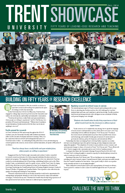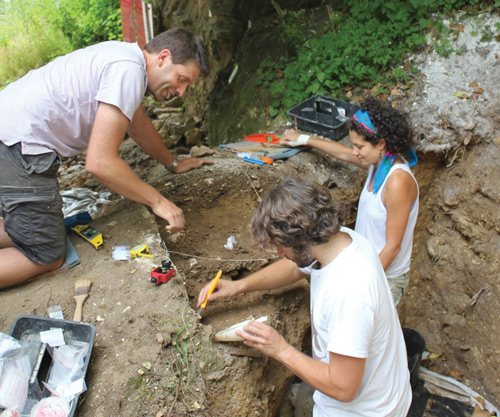
 |
 What’s the Real Story About How Humans and Neanderthals Co-existed?
Anthropologist Dr. Eugène Morin believes that modern humans didn’t simply replace the Neanderthals – we may have actually mated with them. In a multi-author study in the prestigious journal Nature, Professor Morin contributed materials used to support the notion that Neanderthals and modern humans could have lived during the same time period, at least for long enough that the two groups would have engaged in complex cultural and genetic interactions. How closely are we really related? Collaborating with an international group of fellow archaeologists, Prof. Morin participated in a study that raises important implications for research into the cultural, technological and biological elements involved in the replacement of Neanderthals by modern humans. “Interactions between distinct populations – even those as distinct as Neanderthals and early modern humans – are extremely complex and rarely result in simple and direct replacement of one group by another,” said Prof. Morin. The paper provides a more refined timeline for the disappearance of the Neanderthal species from Western Europe than any previous research. The new data is consistent with his earlier research which suggested that Neanderthals experienced severe population decline as a consequence of extremely unfavourable climatic conditions, yet succeeded in maintaining genetic ties with other neighbouring populations, including the anatomically modern humans arriving from Africa. This process could have permitted the diffusion of Neanderthal traits into the modern human gene pool. These findings provided support to the hypothesis that Neanderthals contributed, although minimally, to the emergence of modern humans. The benefits of interdisciplinary conversation Since taking a position with Trent University’s Department of Anthropology six years ago, Prof. Morin’s research has benefited greatly from interdisciplinary conversations with colleagues in other scientific fields. He is the first faculty member at Trent to be conducting research in his field, and the help he received from many individuals throughout the University has been a key factor in developing the studies that led to his latest publication. “I have very fruitful discussions with Trent biologists and people from the Ministry of Natural Resources office on campus,” he said. “I learned a lot from them about herbivores, which were extensively exploited during the Paleolithic era.” This information was key to Prof. Morin’s assertion, published in 2008, that modern humans are related to early Neanderthals, and ultimately influential for his latest research. For Prof. Morin, the publication of this paper is the culmination of many years of research into the disappearance of the Neanderthal species. Working on team projects of this kind across the globe provides many opportunities for the exchange of ideas and keeping up to date on the latest advances in the field, he said. “Pulling together all these data from a wide range of sites and regions is always a challenge, but the results are often quite productive.” The next step, according to Prof. Morin, will be to reconcile these findings with the DNA evidence, a task that will require much more work – but Prof. Morin is up for the challenge. |

































